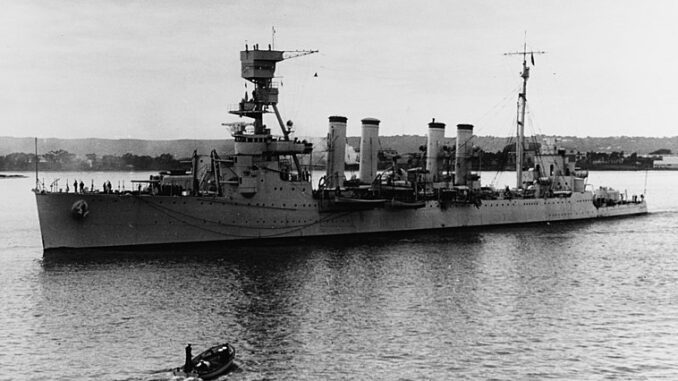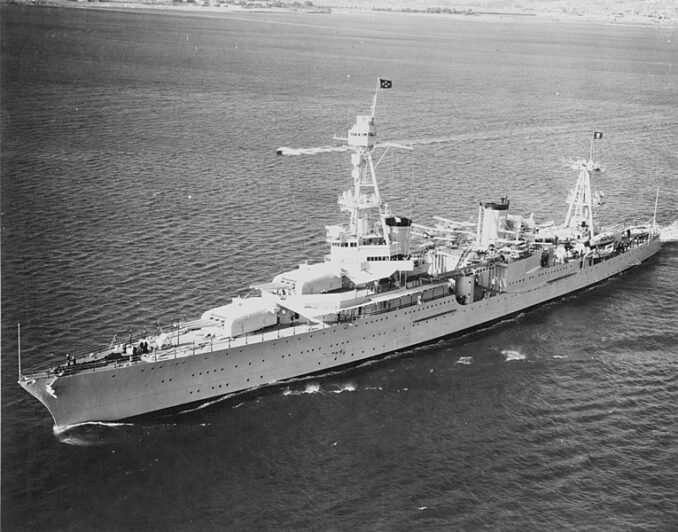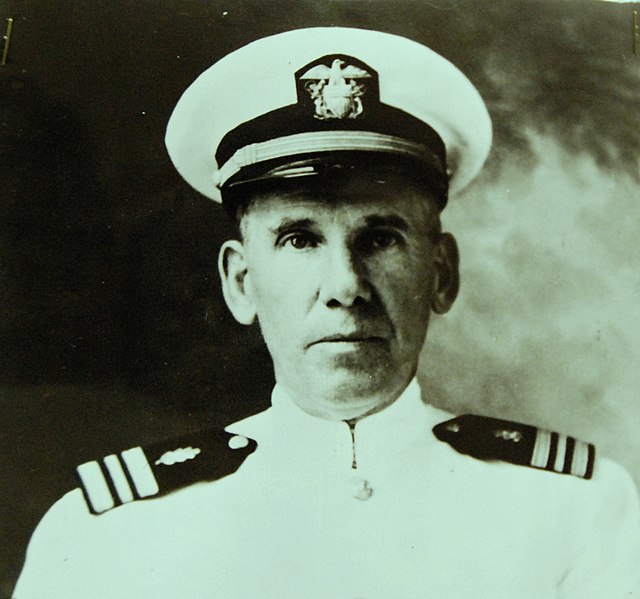
In early 1942, Japanese forces were handing the Allies defeat left and right in the South Pacific. Allied forces were outnumbered and outmatched. One of the prizes that the Japanese wanted was the Dutch East Indies, a colony rich in natural resources: particularly oil, rubber, and rice. To strengthen their hand against the Imperial Japanese Navy (IJN), a joint allied naval force was assembled at Surabaya, on the northern coast of the island of Java. The American-British-Dutch-Australian (ABDA) flotilla consisted of four cruisers and seven destroyers. The American contingent included the cruisers USS Houston (CA-30) and USS Marblehead (CL-12). The group had had some success stopping a Japanese invasion convoy on 24 January 1942. Intelligence reports indicated the Japanese were about to try again with a convoy of troop ships believed to be headed to Surabaya through the Makassar Strait. The ABDA fleet headed out across the Java Sea to meet them, but were instead found by three or four dozen land-based Japanese ‘Nell’ and ‘Betty’ medium bombers. (This became known as the Battle of Makassar Strait, 4 February 1942, although it actually took place on the Java Sea, not in the strait.) Several ships were hit and suffered casualties. Houston and Marblehead were damaged badly enough to force a withdrawal of the entire ABDA fleet. Injured sailors were brought to Tjilatjap, on the southern shore of Java. From there, Houston departed south for Australia for repairs. Marblehead was too crippled to try to make it to Australia, but was too big to dock for proper repairs at Tjilatjap. After temporary repairs were made she too left for a port capable making the repairs she needed, embarking on a remarkable 90-day journey that took her all the way back to the United States east coast, but that’s another story). The Houston was torpedoed and sunk during the Battle of Sunda Strait on the night of 28 February – 1 March 1942.

On the island of Java, 41 injured sailors from the Marblehead and Houston were cared for at a Dutch hospital somewhere inland from both Tjilatjap and Surabaya. An American Navy doctor, Lieutenant Commander
Corydon Wassell, travelled from Surabaya to assist the Dutch in caring for the American sailors.
Wassell was born on the Fourth of July, 1884, in Little Rock, Arkansas. Graduating in 1909 with a medical degree, he went into private practice as a physician, marrying in 1911. In 1913, he became a medical missionary and moved his family to China, where he worked at a university hospital, became a professor of parasitology, discovered the source of a plague, and became an authority on encephalitis and amoebic dysentery. He became head of the Chinese National Red Cross in 1918. His fourth child was born in 1919. At Kiukiang, Waddell was port medical officer and maritime medical officer, 1923-1927. In 1924, he accepted a commission in the US Navy Reserve Medical Corps as a Lieutenant J.G. His first wife died in 1926, which may or may not have resulted in his decision to voluntarily serve on Yangtze River Patrol gunboats in 1927. He subsequently remarried. (How he had time to accomplish all this and more is hard to imagine, but he did.) During the Great Depression, he worked to contain malaria as part of the Civilian Conservation Corps in the US. He certainly was a busy man.
Before war broke out Wassell was called to active duty in 1940, and assigned to the Surabaya Navy Base, Java, as chief medical officer. When the injured sailors off Houston and Marblehead were moved to the Dutch hospital, Wassell went to assist. Not long after, the island was invaded by Japanese forces, and Wassell took it upon himself to find a way to evacuate the American sailors. Making phone calls, he found out there were steamships at Tjilatjap that could take them. Wassell got his patients on a train bound for the port, but when they arrived, he learned that only those who could walk on their own would be allowed to board; the reasoning being that those who couldn’t walk would have no chance to survive if the ship was torpedoed. The walking wounded boarded ship and left. Wassell choose to stay, and returned to the hospital with the nine men too injured to be evacuated. Wassell didn’t give up. He tried to get them on a military transport plane, and that possibility was looking promising, but an air attack damaged the aircraft and Wassell was back at square one. A lucky break occurred when he heard about a small steamer leaving Tjilatjap as one of the last ships out. The invading Japanese were coming ever closer. This was their last chance. The small ship was packed with twice as many passengers as it was designed to carry, but the captain reluctantly allowed Wassell and his men aboard. In about two weeks, they made it to safety in Australia.
Lieutenant Commander Corydon McAlmont Wassell was awarded the Navy Cross for saving the lives of the men in his care. President Roosevelt was impressed enough to make Wassell’s heroism the subject of a fireside chat on April 28, 1942. Upon returning to the States, he was promoted to Captain. A book was written anout him, “The Story of Dr. Wassell”, by James Hilton. Cecil B. DeMille made a movie by the same name, “The Story of Dr. Wassell” (1944), starring Gary Cooper.
Wassell retired as a Rear Admiral. He passed away in Little Rock, Arkansas, 12 May 1958 (aged 73). He lays at rest in Arlington National Cemetery.

Question of the Night: How’s your weather?
